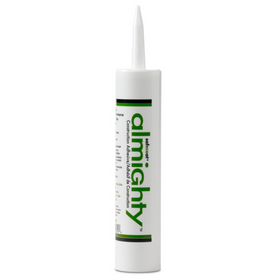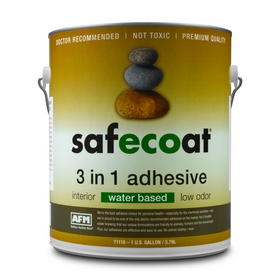
A Century-Old Semi in Toronto Gets a Sustainable Makeover
Last Updated: Mar 29, 2025Marianne and Luke Windisch take sustainability seriously. "We certainly both try to live sustainably," says Marianne Windisch. "We bike everywhere with the kids all year long. We do have a car, but it's electric. We generally try to minimize our environmental impact where we can. But we also believe in doing things well, once and for the long term."
With that last statement, she's referring to the family's home renovation, completed in 2018. Young and newly married, the couple purchased a circa-1920s semi-detached home in the Leslieville area of Toronto in 2012. They did enough repairs to live in the house comfortably for a while and had their first child. With their second child on the way, they knew it was time to get serious about adding insulation, fixing air leaks in the windows, and making sure they had adequate thermal comfort. The couple also realized they would soon need more space.
Since Marianne is a professor of building science and mechanical engineering at the University of Toronto, she knew what needed to get done. "While our design decisions made our home more sustainable, which aligned with our values, we also wanted to make sure we were making decisions that would suit our needs now and into the future," she says. "Particularly, as we start to see greater intensity and frequency of extreme heat events with climate change, we knew we needed systems that would minimize cooling energy use while still maintaining good thermal comfort when we needed it."
Table of Contents
- Going Big for a New Old Home
- How Did the Project Achieve Their High-Performance Envelope?
- How Did The Project Ensure Excellent Air Quality?
- Decision-Making and Challenges

They hired Greening Homes, a contractor specializing in sustainable renovations, also based in Toronto, to undertake the project.

Going Big for a New Old Home
To get the extra space they needed, Marianne and Luke decided to expand the third-floor attic. The couple got buy-in from the neighbors to retain the twinned appearance with the next-door semi (including the roof profile). They were able to increase not only the ceiling height but also the floor space.

Their new attic added 600 square feet to the home, for a total of 1,800 square feet. The third floor now includes an airy, open master bedroom with 14-foot ceilings and an ensuite bathroom, and a light-filled home office for Luke (general manager for a medical device company). The renovated second floor has two bedrooms and a bath for the kids.

How Did the Project Achieve Their High-Performance Envelope?
Because the new slightly higher peaked roofline in front, and a flat roof extending over the back, produced an increased heat-island effect, the flat roof and third floor were insulated with ROCKWOOL or other mineral wool products: Safe'n'Sound insulation on the party wall; Toprock DD on the roof and underlay for the vented roof; and Comfortboard 110 beneath the cladding. The contractors also installed vents and poured a reflective coating.

Another challenge was creating a high-performance envelope for maximum energy efficiency and thermal comfort. Only 12 inches existed between the Windisch home and their neighbor's home to the south, and there was a party wall on the north. So, the couple decided to gut the house to insulate wall cavities from the inside. They opted to keep the kitchen and second-floor bathroom as they were. Said Maryanne,
We figured we were only going to do this once, so we might as well do it properly.

Greening Homes installed fiberboard on the interior stud cavities, then insulated them with Densepack Cellulose. Cellulose is non-toxic as it's made from recycled material (paper products) and has low embodied energy. It also fills cavities that batt insulation cannot cover, as in behind electrical boxes.

According to Greening Homes, the couple saved about 3,895 kg of carbon dioxide compared with a typical renovation of the same size. That reduction is equivalent to the carbon that 101 trees can absorb over their lifetime.

How Did The Project Ensure Excellent Air Quality?
A high-performance, air-tight home needs a continuous flow of fresh air. To achieve this, the homeowners added a heat recovery ventilator (HRV) on the third floor. Contractors adjusted the existing ductwork to run a return to the third floor. That way, fresh air brought up to the third-floor addition could also be cycled throughout the house.
The top floor also has operable clerestory windows for natural light and ventilation. The windows will also help create a stack effect. Because of the home's east-west orientation, the couple can experiment with the HRV and cross-ventilation to balance their source of fresh air. The couple also asked that non-toxic materials be used throughout the interior. The wet-applied products used in air-tightness detailing and the window and door insulation are free of ingredients on the Red List. The adhesives and paints are zero-VOC.

Decision-Making and Challenges
"I think the biggest challenge for Luke and I was trying to manage all of the decision-making alongside two full-time jobs," recalls Marianne. "It felt like every night we had to sit down and make what seemed like stressful decisions because they often involved spending more money. While we certainly spent more than we planned, we did so trying to take advantage of circumstances that would only present themselves during this renovation."
For example, she explains, "While the walls were open and the contractors were preparing to install insulation, we decided to fix awkward wiring or do a better job with the ductwork so the house was more air-tight and would perform better for us."

One choice Marianne wishes they would have made is about the windows. "I regret not putting in triple-glazed windows. This really pains me as a building scientist! But, we couldn't keep increasing the budget, so we opted for double-glazed. We get condensation on the windows in the wintertime, so I have to keep up with the maintenance and cleaning each spring to prevent mold growth."

Still, Marianne and Luke are thrilled to have completed a healthy, sustainable home in which to work, play, live, and raise their family. When Marianne is asked what she loves best about her renovated home, she laughs and says, "Do I only get to pick one thing?"

Then, she counts the ways. "I really love our third-floor space with views of the downtown from our third-floor balcony, the airy office that has served us so well during COVID, and the beautiful master bath and the high ceilings in our master bedroom. The rest of the house pretty much went back together as it was originally, but with strategically placed closets and much nicer trim work and floors. So, we love the whole house."
Camille LeFevre
Camille LeFevre is an architecture and design writer based in the Twin Cities.










